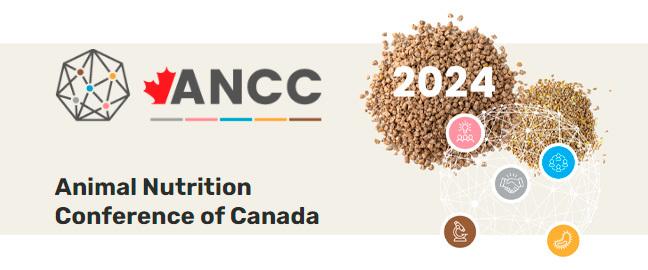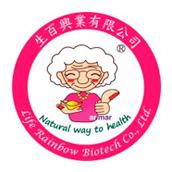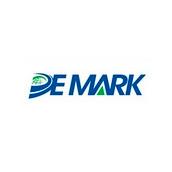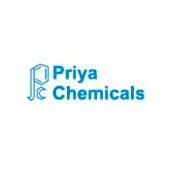Explore all the information on
Porcine Reproductive & Respiratory Syndrome (PRRS)
Welcome to the page about Porcine Reproductive & Respiratory Syndrome (PRRS) of Engormix; a source of knowledge on Porcine Reproductive & Respiratory Syndrome (PRRS).
Introduction: When pathogens become airborne, they travel associated with particles of different size and composition. Particle size determines the distance across which pathogens can be transported, as well as the site of deposition and the survivability of the pathogen. Despite the importance of this information, the size distribution of particles bearing viruses emitted by infectious animals remains unknown. In this study, we characterized the concentration and size...
Comments : 0
Recommendations: 0
Introduction: Porcine reproductive and respiratory syndrome (PRRS) is a highly contagious and economically devastating porcine viral disease. The causative agent belongs to the genus Arterivirus, family Arteriviridea. The ID Screen® PRRS Indirect ELISA is designed to detect antibodies directed against PRRSV in porcine serum and plasma. This presents validation data for this test. Materials and Methods: The ID Screen PRRS Indirect ELISA may be...
Comments : 0
Recommendations: 0
Recommended events
May 14, 2024
Canada - Manitoba - Winnipeg
Introduction: Surveillance systems are critical for accurate and timely monitoring and effective disease control. The use of statistical quality control methods for monitoring endemic diseases which are part of compulsory surveillance programs has not been previously explored. It is important to monitor changes of for instance disease prevalence, which might indicate disease spread. Thus allowing control efforts to be triggered immediately. Materials and...
Comments : 0
Recommendations: 0
Introduction: Porcine reproductive and respiratory syndrome virus (PRRSV) is a well-known cause of reproductive failure worldwide. It is known that PRRSV can induce apoptosis under in-vitro conditions, and is significantly associated with cell the occurrence of cell death in multiple infected tissues invivo. The mechanism of cell death occurring at the maternal-fetal interface during PRRSV infection, and the relationship of cell death to the cytopathic effect of the PRRSV and...
Comments : 0
Recommendations: 0
Introduction: The sterile alpha motif and HD domain 1 (SAMHD1) protein has been identified as a novel innate immunity restriction factor that inhibits HIV-1 infection in myeloid cells, and is a type I interferon (IFN) inducible restriction factor. Previous study showed that overexpression of porcine SAMHD1 efficiently blocked highly pathogenic porcine reproductive and respiratory syndrome virus (HP-PRRSV) replication in MARC-145 cells, and SAMHD1 is activated in target cells...
Comments : 0
Recommendations: 0
Introduction: Nowadays, many vaccination programs have to be implemented in sows. Firstly, reduction of injections by administering vaccines simultaneously can improve both animal welfare and the farmer’s labour efficiency. Secondly, these combinations must be safe and effective, the European Medicines Agency (EMA) being the institution responsible for guaranteeing the efficacy of these mixtures. The purpose of this study was to assess the inuse stability of the...
Comments : 0
Recommendations: 0
Introduction: Porcine Reproductive and Respiratory Syndrome Virus (PRRSV), known as the causative agent of PRRS, is considered strain variation of different virulence. A class of small regulatory RNAs, termed microRNAs (miRNAs) was associated with gene regulation at the post-transcriptional level. It has been well established that miRNAs play many complex roles during viral infections. To indentify the impact of PRRSV strains of different virulence infections on the cellular...
Comments : 0
Recommendations: 0
Introduction: Porcine Respiratory and Reproductive Syndrome Virus (PRRSV) is a disease which has a significant impact on the global pig industry. The objective of this work is to develop and validate an experimental challenge model for PRRSV to facilitate the efficacy testing of novel vaccines and therapeutics. Materials and Methods: A total of 23, seven week (+ 1 week) old piglets (PRRSV antibody negative) were included on the study. On arrival the...
Comments : 0
Recommendations: 0
Introduction: PRRS virus was identified in 1990' earlier and classified two groups in type 1 and type 2 genetically. PRRS virus has been discovered all over the world. PRRS modified live virus vaccines are introduced in many country to control PRRS. But these PRRS live virus vaccines didn’t defend against heterologous PRRS virus perfectly. This field case shows reproductive performance after type 1 modified live virus vaccination when it is infected with type 1...
Comments : 0
Recommendations: 0

Kimberly VanderWaal (University of Minnesota) talks about genome sequencing and classification of viruses, during this Swine It interview with host Laura Greiner....
Comments : 0
Recommendations: 0
.jpg&w=3840&q=75)
Theresia Lavergne (Natural Biologics) comments on her research on the antiviral properties of medium-chain monoglycerides in pigs with PRRS challenge, as well as future tests on poultry viruses, during the 11th Symposium on Gut Health in Production of Food Animals in St. Louis, USA....
Comments : 0
Recommendations: 0
Introduction: To define breeding sow herds as PRRS non-suspect, PRRS ELISA negative results are required according to the German surveillance program. IDEXX X3 ELISA is a commonly used test because of its high specificity and sensitivity. To control and eradicate PRRSv, the choice of PRRS MLV vaccine is important with respect to spread of vaccine virus and impact on virus circulation. Only little is known about duration and persistence of PRRS-specific antibodies,...
Comments : 0
Recommendations: 0
Introduction: In PRRS challenge studies a large amount of data is available and is often presented in tables to demonstrate the effect of challenge. All of the effects of challenge are happening in the pigs at the same time. Still it is a challenge to visualize the simultaneous events in an optimal way. This paper aims to visualize a number of simultaneous effects of PRRSV challenge in vaccinated pigs using a time spatial moving graph. Materials and...
Comments : 0
Recommendations: 0
Introduction: Veterinary practitioners in the Netherlands often try to use PRRS antibody titers as a tool for compliance of modified-live (MLV) PRRS vaccination in piglets, or to show PRRS field virus infection in piglets regardless of previous PRRS MLV vaccination. The objective of this field study was to evaluate results of PRRS antibody testing in the serum end of nursery, at 5-7 weeks after PRRS MLV vaccination. Materials and Methods: In five...
Comments : 0
Recommendations: 0

Paul Yeske and Ryan Strobel (Swine Vet Center) discuss the obligation of containment when there are positive cases and the measures to take, during this Swine It interview with host Laura Greiner....
Comments : 0
Recommendations: 0

Paul Yeske (Swine Vet Center) comments on the variants found in different regions, during this Swine It interview with host Laura Greiner....
Comments : 0
Recommendations: 0

Giovani Trevisan (Iowa State University) commented on some precautions and biosecurity measures to stop the spread of this disease, during this Swine It interview with host Laura Greiner....
Comments : 0
Recommendations: 0
Introduction: Deoxynivalenol (DON) is a mycotoxin produced by Fusarium spp. and is a common contaminant of grains worldwide. DON has been shown to increase susceptibility to viral infections. The objective of this study was to investigate the impact of DON on porcine reproductive and respiratory syndrome virus (PRRSV) immunization and subsequent challenge infection in vivo. Materials and Methods: In total 38 piglets were divided into four groups. Group I (10...
Comments : 0
Recommendations: 0
Introduction: Porcine reproductive and respiratory syndrome virus (PRRSV) is primary pathogen of pigs causing serious failure in production and reproduction of pigs. We confirm the influence of the infection and the vaccination to the immune response in the experiment in vivo. The immunosuppressive activity of this virus can also predispose to secondary bacterial infections. The animals infected with both pathogens develop more severe clinical signs. Materials and...
Comments : 0
Recommendations: 0
Introduction: The objective of this study was to evaluate the onset of immunity of PrimePac PRRS, a modified live PRRSv Type II vaccine, in piglets vaccinated intramuscularly (IM) or intradermally (ID) with IDAL, followed by challenge with PRRS Type II strain VR2332 4 weeks later. Materials and Methods: Two-week old piglets were vaccinated with one dose PrimePac PRRS vaccine (produced by MSD-AH, The Netherlands) dissolved in Diluvac Forte. Vaccinations were...
Comments : 0
Recommendations: 0



.jpg&w=3840&q=75)



.jpg&w=3840&q=75)







